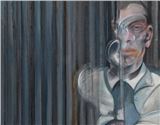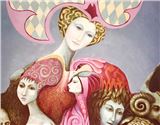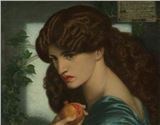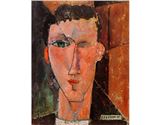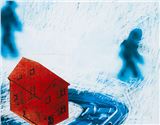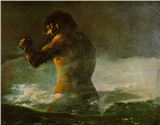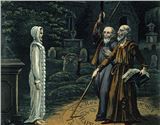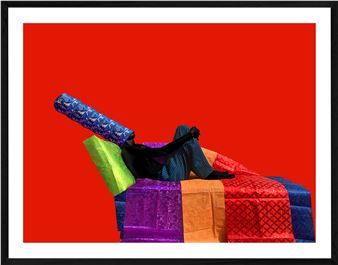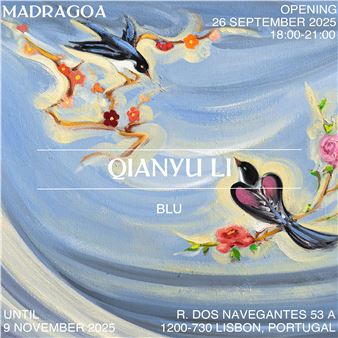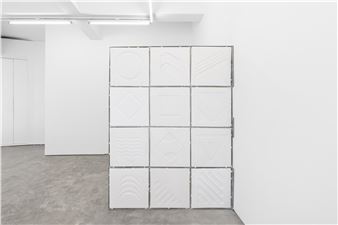British Art: Convergences
This exhibition shows the impact of artists from different geographies on the configuration of art in the United Kingdom in the 20th century, bringing together an important group of works of British art from the CAM Collection and the Coleção Berardo.
вҖҳBritish Art вҖ“ ConvergenceвҖҷ brings together more than 100 works by 74 artists, principally from two major private Portuguese collections, CAM вҖ“ Centro de Arte Moderna Gulbenkian and the Berardo Collection. These works are complemented by relevant external loans from Britain and France to further contextualise a narrative foregrounding the significant cross-national transference that distinguished British art practice in this century.
The question of what constitutes British art вҖ“ past and present вҖ“ is always in flux. The past two decades have seen a major reassessment and foregrounding of the immigrant and diasporic influence on вҖҳBritishвҖҷ art as part of a move to decolonise the canon. The exhibition demonstrates BritainвҖҷs significant artistic dialogues with France, America and Portugal, via both well and lesser-known artists, connected not only by artistic movements and practices, art school training and exhibition platforms, but also through shared personal histories including national and ethnic identities, Г©migrГ© trajectories and experiences.
Following a thematic rather than a strictly chronological approach, the exhibition highlights major themes including the dominance, lapse and then resurgence of figuration and the many strands of realism in late nineteenth and twentieth-century British visual culture.
Of equal importance, is the rise of abstraction and its many variants, with a strong emphasis on constructivism. The great English tradition of landscape вҖ“ though not a dominant theme вҖ“ is signalled by the presence of J. M. W. Turner, whose long legacy is represented by a seascape.
Postwar migrations from countries with repressive regimes, including South Africa and Portugal, established new вҖҳpontos de fugaвҖҷ вҖ“ lines of convergence, which can also be divergent вҖ“ that continue to this day.
ГүmigrГ© or temporarily displaced artists, have been central to all of these movements and have played a vital role in forming and stimulating dialogue, drawing on their own experiences and backgrounds to contribute to a revitalized and, ultimately, more inclusive British art scene.

Recommended for you
This exhibition shows the impact of artists from different geographies on the configuration of art in the United Kingdom in the 20th century, bringing together an important group of works of British art from the CAM Collection and the Coleção Berardo.
вҖҳBritish Art вҖ“ ConvergenceвҖҷ brings together more than 100 works by 74 artists, principally from two major private Portuguese collections, CAM вҖ“ Centro de Arte Moderna Gulbenkian and the Berardo Collection. These works are complemented by relevant external loans from Britain and France to further contextualise a narrative foregrounding the significant cross-national transference that distinguished British art practice in this century.
The question of what constitutes British art вҖ“ past and present вҖ“ is always in flux. The past two decades have seen a major reassessment and foregrounding of the immigrant and diasporic influence on вҖҳBritishвҖҷ art as part of a move to decolonise the canon. The exhibition demonstrates BritainвҖҷs significant artistic dialogues with France, America and Portugal, via both well and lesser-known artists, connected not only by artistic movements and practices, art school training and exhibition platforms, but also through shared personal histories including national and ethnic identities, Г©migrГ© trajectories and experiences.
Following a thematic rather than a strictly chronological approach, the exhibition highlights major themes including the dominance, lapse and then resurgence of figuration and the many strands of realism in late nineteenth and twentieth-century British visual culture.
Of equal importance, is the rise of abstraction and its many variants, with a strong emphasis on constructivism. The great English tradition of landscape вҖ“ though not a dominant theme вҖ“ is signalled by the presence of J. M. W. Turner, whose long legacy is represented by a seascape.
Postwar migrations from countries with repressive regimes, including South Africa and Portugal, established new вҖҳpontos de fugaвҖҷ вҖ“ lines of convergence, which can also be divergent вҖ“ that continue to this day.
ГүmigrГ© or temporarily displaced artists, have been central to all of these movements and have played a vital role in forming and stimulating dialogue, drawing on their own experiences and backgrounds to contribute to a revitalized and, ultimately, more inclusive British art scene.
Artists on show
- Adrian Ryan
- Alan Davie
- Alfred Wolmark
- Allen Jones
- Anthony Green
- Anthony Hill
- Antony Gormley
- Art & Language
- Balraj Khanna
- Barry Flanagan
- Barry Flanagan
- Bartolomeu dos Santos
- Ben Nicholson
- Bernard Meadows
- Bridget Riley
- David Bomberg
- David Hockney
- Deanna Petherbridge
- Derrick Greaves
- Eduardo Batarda
- Eduardo Paolozzi
- Edward Burne-Jones
- Eileen Agar
- Ella Bergmann-Michel
- Erich Kahn
- Fernando Calhau
- Francis Bacon
- Frank Auerbach
- Frank Bowling
- Gillian Ayres
- Gillian Wise
- Graça Pereira Coutinho
- Grace Pailthorpe
- Hamish Fulton
- Henryk Gotlib
- Jann Haworth
- João Penalva
- Joe Tilson
- John Singer Sargent
- Joseph Mallord William Turner
- Julian Opie
- Kenneth Armitage
- Kenneth Martin
- Kurt Schwitters
- László Moholy-Nagy
- Leon Kossoff
- Marc Quinn
- Mark Gertler
- Mark Lancaster
- Mark Wallinger
- Menez
- Michael Andrews
- Michael Craig-Martin
- Michael Kidner
- Pamela Golden
- Patrick Caulfield
- Paula Rego
- Paule Vézelay
- Pauline Boty
- Peter Péri
- Peter Sedgley
- R. B. Kitaj
- Rachel Whiteread
- Reuben Mednikoff
- Rui Sanches
- Sir Roland Penrose
- Victor Pasmore
- Walter Richard Sickert

 ARTISTS
ARTISTS
